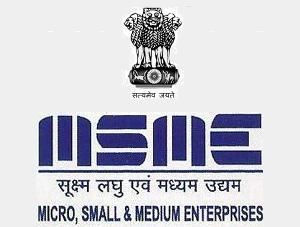MSMEs New Revival Framework to focus on rehabilitation and exit norms
By TIOL News Service
 |
NEW DELHI, NOV 31, 2015: THE Ministry of Micro, Small & Medium Enterprises has notified a Framework for Revival and Rehabilitation of MSMEs, in exercise of the powers conferred under section 9 of the Micro, Small and Medium Enterprises Development Act, 2006.
In India, the existing mechanism for addressing revival, rehabilitation and exit of small enterprises is very weak. The most recent Doing Business (DB) Report, a joint project of the World Bank and the International Finance Corporation, ranks India 137 out of the 189 economies for resolving insolvencies. It notes that resolving insolvency takes 4.3 years on average and costs 9.0% of the debtor’s estate, with the most likely outcome being that the company will be sold as piecemeal sale.
Pending a detailed revision of the legal framework for resolving insolvency/bankruptcy, there is a felt need for special dispensation for revival and exit of MSMEs. The MSMEs facing insolvency/bankruptcy need to be provided legal opportunities to revive their units. This could be through a scheme for re-organization and rehabilitation, which balances the interests of the creditors and debtors.
Salient Features
The main features of the framework which complements to the features of the existing RBI notification of 2012 and 2014 are as below:
Identification of incipient stress: Before a loan account of a MSME turns into a Non Performing Asset (NPA), banks/creditors are required to identify incipient stress in the account. Any Micro, Small or Medium enterprise may also voluntarily initiate proceedings under this Order if enterprise reasonably apprehends failure of its business or its inability or likely inability to pay debts and before the accumulated losses of the enterprise equals to half or more of its entire net worth.
Committees for Distressed Micro, Small and Medium Enterprises:All banks shall constitute one or more Committees at such locations as may be considered necessary by the board of directors of such bank to provide reasonable access to all eligible Micro, Small and Medium enterprises which have availed credit facilities from such bank. The Committee shall comprise of representatives of the Bank, independent expert and representative of the State Government.
Corrective Action Plan (CAP) by the Committee: The Committee may explore various options to resolve the stress in the account. The intention is to arrive at an early and feasible solution to preserve the economic value of the underlying assets as well as the lenders’ loans and also to allow the enterprise to continue with its business. During the period of operation of Corrective Action Plan (CAP), the enterprise shall be allowed to avail both secured and unsecured credit for its business operations.
Options under Corrective Action Plan (CAP): The options under Corrective Action Plan (CAP) by the Committee may include: (i) Rectification - regularize the account so that the account does not slip into the non-performing asset (NPA) category, (ii) restructuring the account if it is prima facie viable and the borrower is not a willful defaulter, and (iii) recovery - Once the first two options at (i) and (ii) above are seen as not feasible, due recovery process may be resorted to.
Restructuring Process: If the Committee decides restructuring of the account as CAP, it will have the option of either referring the account to Enterprise Debt Restructuring (EDR) Cell after a decision to restructure is taken or restructure the same independent of the EDR mechanism. If the Committee decides to restructure an account independent of the EDR mechanism, the Committee should carry out the detailed Techno-Economic Viability (TEV) study, and if found viable, finalise the restructuring package within 30 days from the date of signing off the final CAP.
Prudential Norms on Asset Classification and Provisioning: While a restructuring proposal is under consideration by the Committee/EDR, the usual asset classification norm would continue to apply. The process of re-classification of an asset should not stop merely because restructuring proposal is under consideration by the Committee/EDR. However, as an incentive for quick implementation of a restructuring package, the special asset classification benefit on restructuring of accounts as per extant instructions would be available for accounts undertaken for restructuring under these guidelines.
Willful Defaulters and Non-Cooperative Borrowers: Banks are required to strictly adhere to the guidelines issued by RBI from time to time regarding treatment of Willful Defaulters.
Review: In case the Committee decides that recovery action is to be initiated against an enterprise, such enterprise may request for a review of the decision by the Committee within a period of fifteen working days from the date of receipt of the decision of the Committee. Application filed under this section shall be decided by the Committee within a period of thirty days from the date of filing and if as a consequence of such review, the Committee decides to pursue a fresh corrective action plan for revival of the enterprise shall apply accordingly.
It is expected that above Framework help the lenders and debtors in revival and rehabilitation of enterprises and shall unlock the potential of MSMEs.
| 













